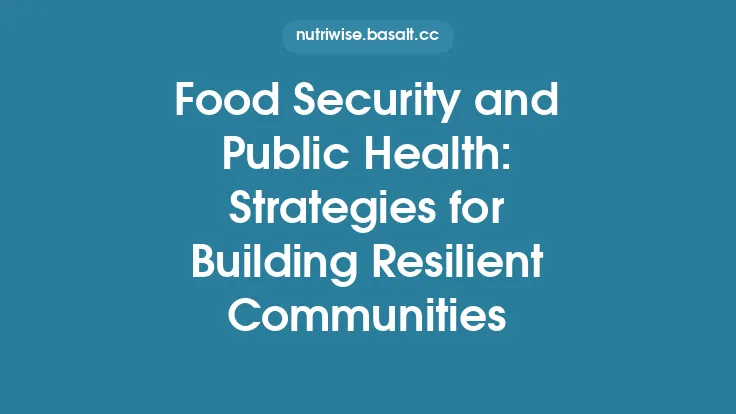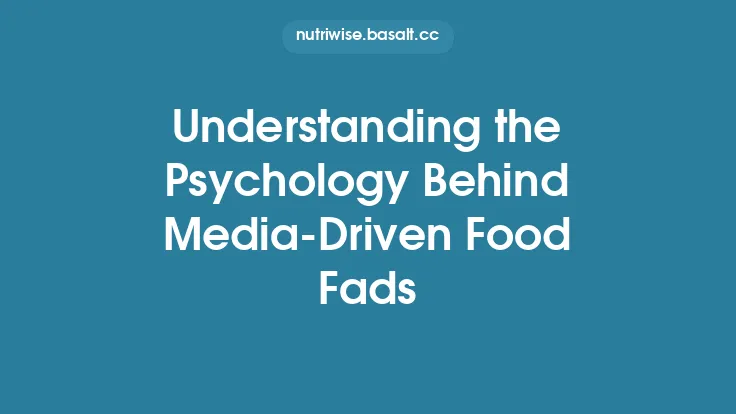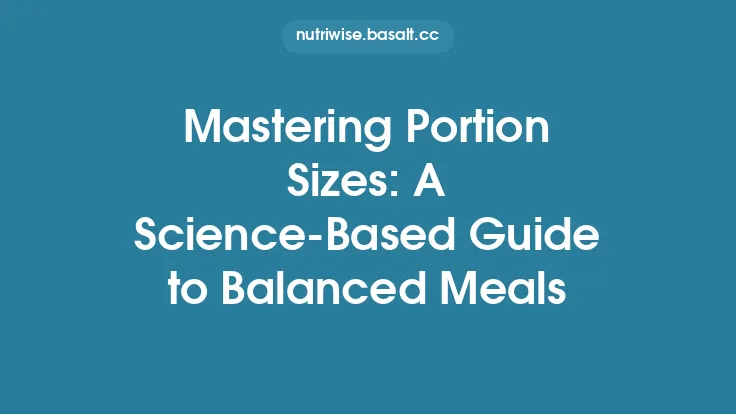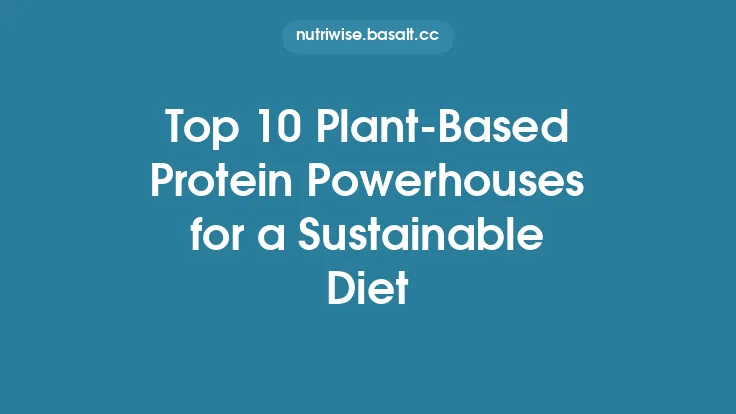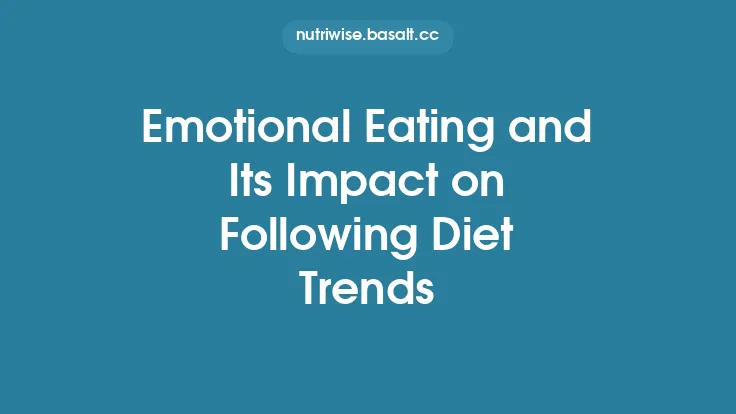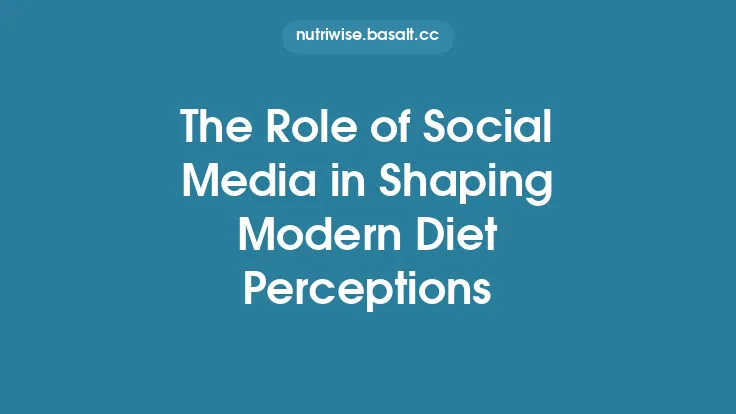In a world where new diet trends appear almost weekly—whether they promise rapid weight loss, detoxification, or “optimal” performance—many people find themselves caught in a cycle of enthusiasm, disappointment, and eventual abandonment. The underlying challenge is not merely the scientific validity of each regimen, but the way individuals relate to food on a psychological level. Developing a resilient food relationship means cultivating a mindset and set of habits that can weather the storm of ever‑changing fads while still supporting health, enjoyment, and personal well‑being.
Understanding Resilience in the Context of Food
Resilience, in psychological terms, refers to the capacity to adapt positively in the face of stressors, setbacks, or change. When applied to eating, it involves:
- Emotional Stability – Maintaining a balanced affect toward food, regardless of external messages.
- Cognitive Flexibility – The ability to shift thinking patterns when confronted with new information without becoming rigidly attached to any single diet narrative.
- Behavioral Consistency – Engaging in sustainable eating practices that align with long‑term health goals rather than short‑term hype.
These three pillars form the foundation for a food relationship that can endure the ebb and flow of diet trends.
The Role of Internal Hunger and Satiety Signals
A cornerstone of a resilient eating approach is learning to trust the body’s own regulatory system. The physiological mechanisms that signal hunger and fullness are sophisticated, involving hormones such as ghrelin, leptin, peptide YY, and GLP‑1, as well as neural pathways in the hypothalamus and brainstem.
- Hunger is not a binary “yes/no” state; it exists on a continuum from *physiological (energy deficit) to psychological* (craving, stress‑induced desire). Distinguishing these can prevent impulsive eating driven by external cues.
- Satiety is mediated by the stretch receptors in the stomach, nutrient‑sensing cells in the intestines, and post‑prandial hormone release. Paying attention to the gradual decline in appetite after a meal helps avoid the “plate‑clearing” habit that many diet plans exploit.
Practical techniques for honing this internal awareness include:
| Technique | How to Practice | Benefits |
|---|---|---|
| Mindful Bite | Pause after each bite, notice texture, flavor, and fullness cues before taking another. | Slows eating rate, enhances satisfaction, improves satiety detection. |
| Pre‑Meal Check‑In | Before eating, rate hunger on a 0‑10 scale; note emotional state. | Differentiates true hunger from emotional triggers. |
| Post‑Meal Reflection | After 15‑20 minutes, assess fullness; decide whether to continue or stop. | Reduces overeating, reinforces body‑feedback loop. |
Building Nutritional Literacy as Psychological Armor
Knowledge alone does not guarantee healthy behavior, but a solid understanding of nutrition can act as a protective factor against the allure of sensational diet claims. Nutritional literacy involves:
- Macro‑ and Micronutrient Fundamentals – Knowing the roles of carbohydrates, proteins, fats, vitamins, and minerals helps evaluate whether a diet’s restrictions are nutritionally sound.
- Energy Balance Principles – Recognizing that weight change is ultimately governed by the law of thermodynamics (calories in vs. calories out) demystifies promises of “miraculous” fat loss without caloric consideration.
- Food Quality vs. Quantity – Appreciating the difference between nutrient density (e.g., leafy greens, legumes) and caloric density (e.g., refined sugars, processed snacks) equips individuals to make choices that support satiety and health.
When faced with a new diet trend, a nutritionally literate person can ask critical questions:
- What nutrients are being limited or emphasized?
- Does the plan provide adequate macro‑ and micronutrients for my activity level and health status?
- Are the recommended portion sizes realistic for everyday life?
Answering these questions reduces reliance on anecdotal testimonials and fosters a more objective stance toward diet information.
Psychological Flexibility: The Antidote to Rigid Dieting
Rigid adherence to a single dietary doctrine often leads to feelings of failure when inevitable deviations occur. Psychological flexibility—rooted in Acceptance and Commitment Therapy (ACT)—offers a healthier alternative. It comprises six interrelated processes:
- Cognitive Defusion – Observing thoughts about “good” or “bad” foods without automatically acting on them.
- Acceptance – Allowing uncomfortable emotions (e.g., cravings, guilt) to exist without trying to suppress them.
- Contact with the Present Moment – Engaging fully with the sensory experience of eating.
- Self‑as‑Context – Recognizing that thoughts about diet are transient mental events, not defining aspects of identity.
- Values Clarification – Identifying core life values (e.g., vitality, family time, performance) that guide food choices.
- Committed Action – Taking steps aligned with those values, even when short‑term discomfort arises.
Applying these processes to eating can look like:
- Noticing the thought “I must avoid carbs today” and labeling it as a *thought rather than a command*.
- Accepting the urge to snack during a stressful workday without immediately giving in, then choosing a nutrient‑dense option that aligns with the value of “maintaining energy for my children.”
- Acting on the value of “enjoying meals with friends” by planning a balanced dinner that includes both favorite foods and healthful sides.
Psychological flexibility thus reduces the binary “all‑or‑nothing” mindset that many diet trends propagate.
Habit Stacking: Leveraging Existing Routines for Sustainable Eating
One of the most effective ways to embed resilient eating behaviors is through *habit stacking*, a concept popularized by behavior‑change research. The idea is to attach a new, desired behavior to an already established routine, creating a cue‑response loop that requires minimal conscious effort.
Example Stack for Breakfast:
- Cue: Turn on the coffee maker (existing habit).
- New Behavior: While coffee brews, prepare a bowl of oatmeal with fruit and nuts.
- Reward: Enjoy the aroma of coffee paired with a warm, satisfying breakfast.
By linking the new behavior to a reliable cue, the brain forms a neural pathway that automates the action over time. This method can be applied to various meals and snack times, ensuring that healthy choices become part of the daily rhythm rather than a separate, effortful decision.
The Power of Self‑Compassion in Food Relationships
Self‑compassion—treating oneself with the same kindness and understanding one would offer a close friend—has been shown to buffer against the shame and guilt that often accompany diet failures. Three components define self‑compassion:
- Self‑Kindness – Speaking to oneself gently when dietary goals are not met.
- Common Humanity – Recognizing that everyone experiences setbacks; you are not alone.
- Mindful Awareness – Observing thoughts and feelings without over‑identifying with them.
When a person slips into a “cheat day” after a week of strict adherence, a self‑compassionate response might be: “I notice I’m feeling disappointed because I didn’t stick to my plan. It’s okay; many people struggle with consistency. I’ll reflect on what triggered the slip and plan a gentle adjustment for tomorrow.” This approach preserves motivation and prevents the all‑or‑nothing spiral that diet fads often trigger.
Managing External Information Overload
The modern information environment bombards individuals with diet headlines, influencer endorsements, and scientific studies—often contradictory. While the article must avoid delving into the psychology of why trends catch on, it can still provide strategies for navigating the influx:
- Source Evaluation Checklist
- *Credentials*: Does the author have relevant expertise (e.g., registered dietitian, peer‑reviewed researcher)?
- *Evidence Base*: Are claims supported by multiple, high‑quality studies rather than anecdotal reports?
- *Transparency*: Are conflicts of interest disclosed (e.g., product sponsorship)?
- Scheduled “Information Fasting”
- Designate specific days or weeks where you deliberately limit exposure to diet‑related media. This reduces mental fatigue and allows you to reconnect with your internal cues.
- Curated Knowledge Hub
- Maintain a personal repository (digital or paper) of vetted resources—textbooks, reputable websites, and professional guidelines. When a new trend emerges, refer first to this hub before exploring external hype.
These tactics help maintain psychological equilibrium and prevent the constant swing of hope and disappointment that accompanies each new diet wave.
Integrating Values‑Based Eating into Daily Life
Values‑based eating is the practice of aligning food choices with deeper life priorities rather than superficial diet rules. For instance, if a core value is “sustaining long‑term health for my family,” meals might be planned to include nutrient‑dense foods that model healthy habits for children. If “cultural heritage” is a guiding value, traditional recipes can be adapted to retain flavor while improving nutritional balance.
Steps to implement values‑based eating:
- Identify Top Three Values – Write them down (e.g., health, community, sustainability).
- Translate Values into Food Principles – For “sustainability,” choose locally sourced, seasonal produce; for “community,” schedule shared meals weekly.
- Create Actionable Plans – Draft a weekly menu that reflects these principles, and review it each Sunday to ensure alignment.
By anchoring food decisions to enduring values, individuals become less susceptible to the fleeting promises of diet trends, which often lack alignment with personal meaning.
The Role of Metacognition in Food Decision‑Making
Metacognition—thinking about one’s own thinking—enhances self‑regulation in eating. It involves two key processes:
- Metacognitive Awareness – Recognizing the mental shortcuts (heuristics) you use when choosing foods (e.g., “I always eat dessert after dinner because it’s a reward”).
- Metacognitive Control – Deliberately intervening to modify those shortcuts (e.g., “I’ll replace dessert with a fruit plate and note how I feel afterward”).
Practicing metacognition can be facilitated through brief journaling prompts after meals:
- *What thoughts influenced my food choice?*
- *Did any external cue (advertisement, social media post) play a role?*
- *How did I feel before, during, and after eating?*
Over time, this reflective habit sharpens the ability to spot automatic, potentially unhealthy patterns and replace them with intentional, value‑aligned decisions.
Designing a Personal “Resilience Blueprint”
To synthesize the concepts discussed, consider constructing a personalized blueprint that serves as a roadmap for a stable food relationship. The blueprint can be organized into four sections:
- Foundational Knowledge
- Summarize key nutrition facts relevant to your health status.
- List trusted sources for future reference.
- Internal Cue System
- Define your personal hunger‑satiety rating scale.
- Note specific bodily sensations that signal fullness.
- Behavioral Strategies
- Outline habit stacks for each meal.
- Include a weekly schedule for information fasting and reflective journaling.
- Values & Flexibility
- Write down top life values and corresponding food principles.
- Draft a contingency plan for inevitable deviations (e.g., “If I miss a planned meal, I will add a protein‑rich snack rather than overcompensate with high‑sugar foods”).
Revisiting and updating this blueprint quarterly ensures it remains relevant as life circumstances evolve, while still providing a stable anchor against the tide of diet fads.
Concluding Thoughts
A resilient food relationship does not arise from strict adherence to any single diet trend; it emerges from a blend of internal awareness, psychological flexibility, informed knowledge, and alignment with personal values. By cultivating these evergreen skills—listening to hunger and satiety cues, building nutritional literacy, practicing self‑compassion, and employing habit‑forming techniques—individuals can navigate the ever‑changing landscape of diet fads with confidence and calm. The result is not only a healthier body but also a more peaceful mind, capable of enjoying food as a source of nourishment, pleasure, and connection, regardless of what the next trend promises.
